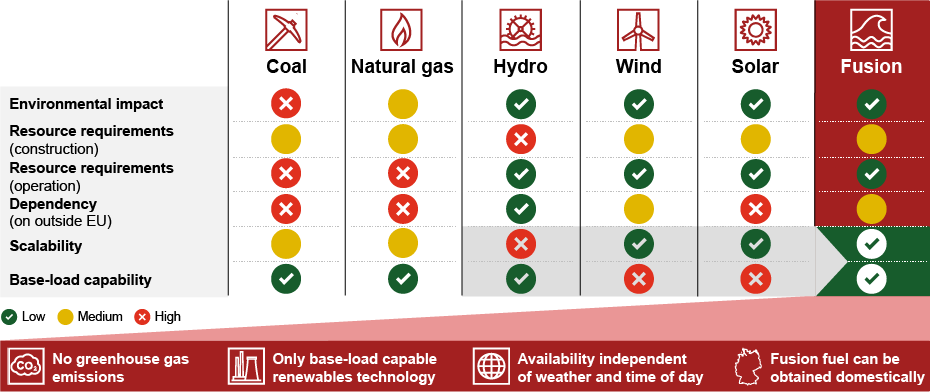Fusion energy as the holy grail of energy generation?
As forecasts show, the global expansion in renewable energy is not sufficient for emission-free power generation by 2050. Without radically new approaches to the transformation of the global energy architecture, the Paris climate targets will be missed by a significant margin.
Fusion energy might be the missing key to a sustainable, sufficient and affordable energy supply. New breakthroughs in materials, computing and laser research are making the remaining challenges increasingly manageable and bringing the “holy grail" of energy generation within reach. Progress is reflected in rapidly increasing private investment in commercial fusion startups, where modern approaches and faster innovation and decision cycles could lead to a much earlier breakthrough of fusion energy than government research.
However, Germany’s position in the race to first commercial fusion energy is time critical right now. In this report, we have analyzed how fusion energy could be a new engine for the German national energy as the key to a sustainable energy architecture.
The decisive advantage of nuclear fusion over existing renewables
While today only fossil energy is base-load capable and only renewables are emission-free, fusion is the first to manage the balancing act. Therefore, fusion energy may be the missing key to a sustainable, sufficient and affordable energy supply.
The amount of energy from raw materials for fusion available worldwide is sufficient for secure and cheap energy oversupply. As seen in the graphic below, the smallest quantities are sufficient to cover the entire electricity demand, based on resource requirements for a 1000 MW power plant. In the long term, the energy costs from fusion are expected to be below those of today's renewables.
Getting ready for fusion energy
While remaining challenges until fusion’s commercial maturity are expected to be manageable with technology available today, Germany’s position is about to be left behind in entrepreneurial efforts. Therefore, Germany needs to act in time. With the following recommendations, fusion energy has the potential to become a new engine for the German national economy. To facilitate this, a national fusion energy strategy is the backbone of the required close coordination between government and economy. Here is what we recommend:
Artur Korinski co-authored this report. The authors would like to thank Stephan Ruehl for his contributions to this report.





